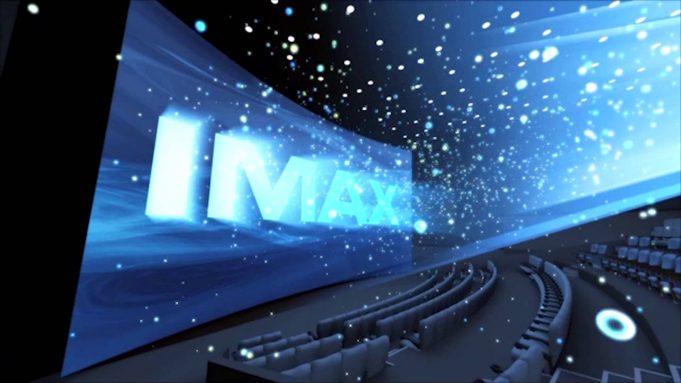Once upon a time, they said 3D is the future. Well, it looks like the future is dead, or at the very least, dying as IMAX plans to move away from 3D.
Just to clarify, I am an IMAX supporter. The huge screen, the amazing sound system, even the way certain IMAX theatres are designed. It’s a unique experience altogether. However, 3D just does nothing for me. And while it is unfair for me to say “it shouldn’t do anything for you, as well,” there is no doubt that 3D — IMAX or not — is, for the most part, a pointless, cash grab (which I will explain later).
However, it appears as though this money making gimmick is slowly but surely dwindling as more people are opting for 2D instead of 3D. Christopher Nolan’s masterpiece, Dunkirk, made 1/4 its earnings from IMAX screenings, despite it not being in 3D.
In an interview with The Verge, IMAX Entertainment CEO Greg Foster had this to say:
It’s worth noting Dunkirk is showing exclusively in 2D, which consumers have shown a strong preference for. We’re looking forward to playing fewer 3D versions of films and more 2D versions.
Perhaps consumers are starting to realize that most 3D films do nothing to enhance the viewing experience. According to Birth Movies Death, MPAA has reported an 8% drop in 3D attendance in the United States in 2016.
Note: While there is a notable decline in 3D attendance in North America, it is China and Asia Pacific in general that are studios’ primary target. According to Quartz, Asia Pacific has the highest share of 3D screens of any region in the world.
This is good news. Many might not realize, but most of the time 3D — IMAX or not — actually dampens the viewing experience rather than enhance it, as it makes the movie dark and murky. Furthermore, most films that have 3D screenings, aren’t even shot in 3D. Confused? Let me break it down for you.
I remember it like it was only eight years ago.
![]()
Before 2009, 3D wasn’t an in thing. Sure, 3D technology was used in entertainment way before 2009, but it was mostly reserved for special conventions (i.e science centres) and crappy movies. Remember Spy Kids 3-D that was released in 2003? As years went by, more mainstream movies started to screen in 3D, including films like Harry Potter and the Order of the Pheonix in 2007. But again, it wasn’t a commonality.
So, what changed?
In 2009, visionary filmmaker James Cameron made Avatar. While I’m not a big fan of that film overall, there is no denying the amazing immersive 3D experience that Cameron provided us with. The difference between James Cameron’s Avatar and most movies today, is that James Cameron, being the mastermind that he is, actually developed a Digital movie camera system known as the Fusion Camera System — created to shoot feature films in stereoscopic 3D. That’s right, this genius wanted to make Avatar a specific way, and because there weren’t cameras out there that could help him achieve his goal, he MADE it. James Cameron put a lot of thought and care into every single frame he painted, making sure that audience could pretty much reach out and grab the leaves dancing in the breeze in Pandora. People flocked to the cinemas to catch this film. Theatre chains that didn’t have 3D screens underwent major renovations and incorporated 3D screens just for this film.
However, major motion picture studios didn’t care about any of that. What they did care about, is the fact that Avatar made a crap ton of money. It is still the highest grossing film of all time worldwide, making more than 2.7 Bil USD. Studios always look for the quickest solution to make money. Christopher Nolan’s dark and gritty Batman reboot made a lot of money? Awesome. Let’s all make all our films dark and gritty. The same thing happened with Avatar. Avatar is a cinematic achievement. Everything that happened after that is a cinematic CON JOB.

Most movies are shot with regular 2D cameras and later converted to 3D during post-production for the sole purpose of making MONEY. This isn’t the filmmakers’ doing. The filmmakers have no intention of making their films a 3D experience. Hence, they don’t use 3D cameras. Not to mention, 3D cameras are bloody expensive. It is the studios who ensure that these films are converted to 3D during post-production and screened in 3D cinemas.
A lot of people don’t know what goes on behind the scenes and might not realize that they’re actually paying double the money for something that isn’t meant to be watched in 3D in the first place. And I’m not just talking about silly B-grade films like Gods of Egypt. Even giant blockbusters like Wonder Woman, Spider-Man: Homecoming, Pirates of the Caribbean: Salazar’s Revenge and Ghost in the Shell were all shot with 2D cameras and post-converted to 3D. I’m merely scratching the surface here. Click HERE and HERE for comprehensive lists. In other words, you would actually have a better viewing experience watching these films in 2D than in 3D. Yeap, sometimes cheaper is better.
Now that I’ve discussed 3D, what about IMAX in particular?
Well, guess what? There are only TWO movies shot using IMAX cameras this year. Transformers: The Last Knight — shot using IMAX 3D cameras — and Dunkirk — shot using IMAX 2D 70 mm cameras. And, Rian Johnson has shot SOME scenes in Star Wars: The Last Jedi using IMAX 2D cameras.
I’m not saying people should avoid IMAX altogether. Afterall, IMAX cinemas, as mentioned earlier, have bigger screens and (for the most part) better sound systems. I myself love watching movies on IMAX screens. What I am suggesting is, avoid 3D — IMAX or not — because for the most part, it is nothing but a gimmick and a giant middle finger up your butthole. Always check the list I linked above to know what movies are actually shot using 3D cameras, so you know when you’re going to get your money’s worth.
*This article has gone through a major makeover because I realized what a crappy piece I wrote yesterday. Also, my editor put a gun to my head or in millennial terms, he spammed my phone.






